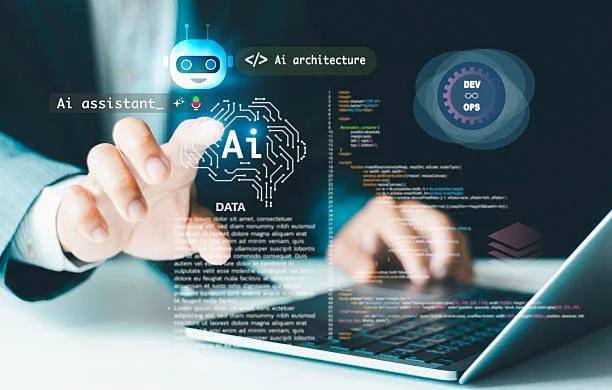AI Copilots are popping up everywhere in enterprise software. They promise faster coding, better code quality, and more productivity. Sounds great, right? But here’s the thing: adding AI to critical workflows comes with risks. Things can go wrong. Security holes, workflow hiccups, and mistakes happen if you’re not careful. Companies that work with AI Copilot development services or Deploying AI Copilots can avoid most of these headaches and still get the benefits.
Using AI isn’t just flipping a switch. You have to plan. Check regulations. Monitor it constantly. If you rush it, you’ll regret it. AI Copilots are helpful, yes, but they don’t replace human thinking.
Risks You Should Know About
Before letting AI loose in your codebase, know what can go wrong:
Data Privacy and Security: AI needs access to code, documentation, and internal tools. Give it too much, and you risk leaks. It’s easy to overlook something and suddenly sensitive data is exposed Deploying AI Copilots.
Model Accuracy: AI isn’t perfect. Sometimes it gives bad advice, wrong code, or suggestions that just don’t fit your workflow. If no one checks it, those small mistakes can snowball.
Workflow Disruption: AI can slow things down if not properly integrated. Developers may need to redo tasks or wait on AI suggestions.
Over-Reliance: Trusting AI blindly is risky. Teams might follow AI advice without thinking, and that’s how errors creep in.
Regulatory Compliance: Some industries are strict—finance, healthcare, defense. AI outputs must follow rules. Mess that up and you could be in trouble.
Knowing these risks early helps you plan, assign responsibility, and reduce surprises.
Journey deeper into knowledge—our related posts await your next click.
How to Reduce Risk
1. Secure Data Access
Give AI only what it absolutely needs. Role-based permissions, encryption, and logs help. Don’t let it roam freely in your repos.
2. Human Oversight
Never let AI act alone. Developers or QA should always review outputs. Even smart AI needs a human check.
3. Continuous Model Evaluation
Models need updates. Regular checks and retraining keep outputs accurate as projects change.
4. Pilot Deployments
Start small. Test on one team or project first. Fix issues before full rollout.
5. Smooth Integration
AI should fit into existing tools. Poor integration frustrates teams. Test in a sandbox first.
How AI Copilot Development Services Help
Working with pros makes a huge difference:
- Custom Training: AI learns your codebase, workflow, and industry rules.
- Compliance Alignment: AI suggestions follow rules. No surprises.
- Pipeline Integration: Embeds into your CI/CD, testing, and management tools.
- Monitoring & Maintenance: Keeps AI in check and improving.
Experienced providers like DevCom save you headaches.
Partnering with Experts for Safer Deployment
One of the easiest ways to avoid big problems is to get an AI Copilot development company involved early. They don’t just set up the AI—they help figure out how it fits into your workflow, keep an eye on compliance, and make sure the system actually works for your team. Sometimes internal teams miss little things, like tiny security holes or parts of the process that slow everything down. Having specialists around means you can focus on the important stuff while AI handles the repetitive work. Plus, internal teams usually pick up a lot—how to monitor, audit, and tweak the AI or Deploying AI Copilots so the next rollout is smoother. It’s not perfect, AI isn’t magic, but it helps a lot when experts guide the way.
Technical Risk Strategies
Code Security: Automated checks for vulnerabilities. Catch SQL injections, bad data handling, etc.
Version Control & Logs: Track all AI actions. Helps for audits or debugging.
Testing Automation: Pair AI with unit, regression, and integration tests. Catch errors early.
Access Control: Limit AI to certain areas only. Sensitive modules stay protected.
Organizational and Cultural Risks
Train Teams: People must understand AI, limitations, and proper use.
Policies: Decide which tasks AI handles and when humans must review.
Feedback Loops: Teams should report AI issues. Continuous improvement is key.
Avoid Over-Reliance: AI is a helper, not a replacement for Deploying AI Copilots.
How to Measure Risk Reduction
Keep track of:
- Error Rate: Are AI outputs buggy?
- Compliance Violations: Any rule-breaking outputs?
- Security Incidents: Unauthorized access?
- Workflow Stability: Did projects slow down?
Checking these metrics helps you adjust quickly.
Case Study: SaaS Company
A global SaaS company used AI Copilots to automate code reviews and documentation. Concerns: data privacy, old CI/CD pipelines, and adoption.
They worked with AI Copilot dev services and did:
- Encrypted repo access
- Pilot tests
- Continuous monitoring
- Human oversight
Six months in:
- Zero AI-related security issues
- 35% fewer review errors
- Developers confident and productive
- Integration smooth, no workflow chaos
Shows careful planning pays off.
Extra Tips
- Start with simple tasks: Build trust before tackling complex stuff.
- Sandbox testing: See potential issues in a safe environment.
- Document AI decisions: Helps with audits and team understanding.
- Share lessons across teams: What works for one team may need tweaks for another.
Looking Ahead
AI Copilots will keep getting smarter. New challenges:
- Adaptive Models: AI learns from multiple projects. Validate outputs.
- More Regulations: Future rules may require full reporting of AI use.
- Consistency Across Teams: Distributed teams need uniform AI behavior.
- Predictive Risk Analysis: AI might flag potential problems before they happen.
Early preparation now makes future adoption easier.
Conclusion
AI Copilots or Deploying AI Copilots can boost productivity and quality, but they come with risks. Working with AI Copilot development services helps deploy them safely. With proper safeguards, human oversight, and smart integration, AI can accelerate delivery, maintain code quality, and support innovation — all while keeping risks in check.
AI isn’t a magic wand. It’s a partner, a tool that makes life easier if used wisely. Mess it up, and it creates problems. Plan, monitor, and adapt — then AI Copilots can really change the game.
Expand your horizon—explore more stories that redefine how you think.






